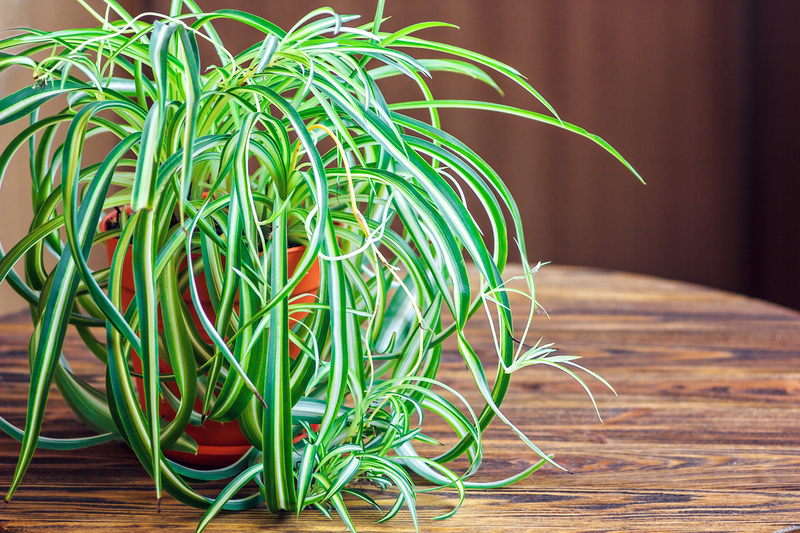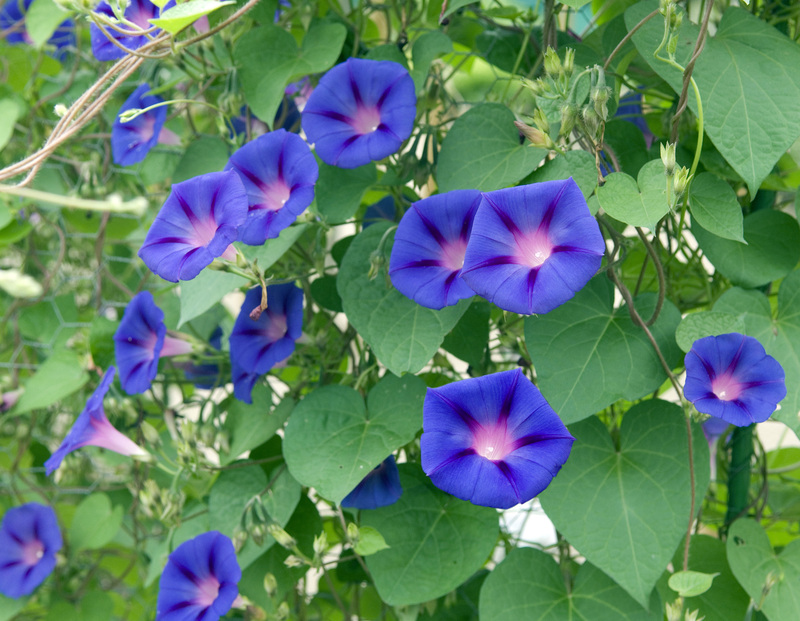Harnessing Vertical Space for Sustainable Home Gardens
Posted on 08/06/2025
Harnessing Vertical Space for Sustainable Home Gardens
In today's world, where urbanization and decreasing backyard space pose challenges for home gardeners, harnessing vertical space emerges as a smart and sustainable solution. Vertical gardening enables healthier plants, bigger yields, and stunning visual appeal, all within limited square footage. This comprehensive article will guide you through the benefits, methods, plant choices, design tips, and actionable steps to create a thriving sustainable home garden using vertical space.
Why Vertical Gardening is the Future of Urban Sustainability
Modern living often restricts us to smaller plots, balconies, and rooftops. By maximizing your vertical gardening space, you can grow more with less, making urban and suburban environments greener and more sustainable. Vertical gardening is not just a trend--it's a practical response to urban challenges, climate change, and food security.
Key Benefits of Harnessing Vertical Space
- Maximizes Small Spaces: Turn blank walls and fences into lush, productive gardens.
- Encourages Sustainability: Reduces the need for transportation, packaging, and chemical inputs.
- Improves Air Quality: Increases oxygen production and reduces indoor pollutants.
- Enhances Aesthetics: Vertical gardens create stunning green art and privacy screens.
- Promotes Healthy Living: Provides access to fresh, organic produce and herbs at home.
- Reduces Pest and Disease Risk: Improved airflow decreases fungal and pest problems.

Types of Vertical Gardens for Sustainable Homes
Living Walls and Green Walls
Living walls, often seen in commercial spaces, are now accessible for home use. These are structures that support plant life via felt pockets, modular panels, or hydroponic systems. Not only are they visually striking, but these vertical installations meaningfully improve indoor and outdoor air quality while insulating your home.
Trellises and Arbors
Using trellises or arbors is one of the simplest ways to harness vertical space for climbing plants. Beans, peas, tomatoes, cucumbers, and even flowering vines like morning glories thrive when given the support to grow upward.
Vertical Planter Systems and Stacked Containers
A growing array of vertical planter systems is available, from pocket fabric hangers to stacked terracotta pots and sleek modular towers. These allow you to grow multiple types of plants in a small footprint, ideal for balconies or patios.
Pallet Gardens
Recycled pallets are a favorite for sustainable home gardeners. They can be easily converted into vertical beds for herbs, salads, and succulents, offering a low-cost, eco-friendly gardening solution.
Planning Your Sustainable Vertical Home Garden
Assess Your Space and Sunlight
- Sunlight: Track morning and afternoon sun exposure to select appropriate plant varieties.
- Structure: Identify available walls, fences, railings, or spots where vertical supports can be safely installed.
- Weight Considerations: Ensure that your structures can hold the weight of soil, water, and mature plants.
Choose Sustainable Materials
Opt for longevity and eco-friendliness:
- Repurposed wood, upcycled pallets, or durable metal frames.
- Non-toxic, biodegradable planter liners or pockets.
- Self-watering or water-efficient irrigation systems.
Selecting Plants for a Vertical Garden
The key to successful vertical gardening lies in picking plants that naturally thrive in upright conditions or that adapt well to confined root spaces. Consider functionality, aesthetics, and your family's favorite foods.
Best Edible Plants for Vertical Home Gardens
- Leafy Greens: Lettuce, kale, Swiss chard, spinach, and arugula grow quickly and harvest cleanly off vertical surfaces.
- Herbs: Basil, mint, thyme, oregano, parsley, and cilantro are compact and productive in vertical planters.
- Vining Vegetables: Tomatoes (esp. cherry types), cucumbers, beans, and snap peas flourish when climbing supports.
- Strawberries: These berries cascade beautifully and optimize limited space.
- Peppers and Eggplants: Mini varieties and chili peppers adapt well to pockets and narrow towers.
Ornamental & Air-Purifying Plants for Vertical Gardens
- Pothos, philodendrons, spider plants for indoor green walls.
- Succulents, ferns, mosses for low-maintenance, dramatic displays.
- Flowering vines such as nasturtium, morning glories, and jasmine for pollinator support and beauty.
Design Ideas and Creative Inspiration
Mixing Textures, Colors, and Heights
Vertical gardens are an art form; blend different plant shapes, leaf colors, and levels for eye-catching results. Combine trailing herbs with upright vegetables, flowering climbers, and compact leafy greens to achieve a balanced look and maximize sunlight exposure for all plants.
Vertical Gardening Indoors vs. Outdoors
- Indoor: Select low-light tolerant, air-purifying species. Ensure access to supplemental grow lights if natural light is lacking. Indoor green walls double as decor and wellness boosters.
- Outdoor: Optimize locations with at least 4-6 hours of sun. Mix edibles and ornamentals, and use robust supports for wind and rain.
Watering and Soil Management in Vertical Home Gardens
Efficient water use is essential for both sustainability and healthy plants. As vertical gardens drain more quickly than in-ground beds, regular monitoring is key.
Smart Irrigation Solutions
- Drip irrigation systems: Deliver consistent moisture directly to plant roots while minimizing waste.
- Self-watering vertical planters: Useful for busy gardeners or those living in hot climates.
- Mulching and coco coir liners: These help retain soil moisture and reduce evaporation.
Best Soil Mixes for Vertical Gardening
- Well-draining potting mixes with compost and perlite ensure lightness and fertility.
- Regular feeding: Feed with organic slow-release fertilizer or compost tea to replenish nutrients.
Maintenance and Troubleshooting
Common Challenges in Vertical Gardens
- Irregular watering: Check moisture daily, especially during hot weather. Mount a rain gauge nearby if outdoors.
- Nutrient depletion: Use organic fertilizers and replenish compost regularly.
- Structural issues: Inspect mounts, frames, and materials for stability, especially before heavy storms or winds.
- Pest management: Dense planting can attract pests; use companion planting and natural predators to manage them.
Tips for Long-Term Sustainability
- Rotate crops and plants to reduce pest build-up and soil fatigue.
- Harvest regularly to encourage new growth and maintain aesthetics.
- Compost all plant trimmings and repurpose soil at the end of the growing season.
- Use rainwater collection systems to sustainably irrigate your garden.
Inspiring Success Stories: Real-Life Vertical Gardens
Many urban dwellers have transformed the sides of their homes, patios, and apartment balconies into lush, sustainable oases by harnessing vertical space for their home gardens.
- Balcony Bliss: In New York, a renter utilized lightweight pocket planters and self-watering towers to grow everything from lettuce to strawberries, enjoying fresh produce and lowering food costs.
- Urban Fence Gardens: In Los Angeles, a family attached recycled gutters to an old fence, producing an abundance of leafy greens and herbs for their meals while beautifying their outdoor space.
- Kitchen Herb Walls: A Toronto chef installed a living wall in his kitchen--harvesting fresh basil, thyme, and parsley year-round, right where he cooks.
The Future of Sustainable Home Gardens is Vertical
As populations grow and available gardening space declines, vertical gardening for sustainable homes offers enormous promise. It addresses the triple bottom line of sustainability--economic, environmental, and social benefits. By choosing efficient designs, suitable plant varieties, and eco-friendly materials, anyone can turn small spaces into productive, beautiful, and resilient gardens.
Take the First Step Today
Start by assessing your living space for unused walls, fences, or balcony railings. Experiment with a small herb pocket planter or a DIY pallet garden. Not only will you enjoy tastier meals, but you'll also play a part in building a greener, more sustainable urban environment.

Frequently Asked Questions (FAQs) about Vertical Home Gardening
- Q: Do plants really grow as well vertically as they do in the ground?
A: With proper sunlight, water, and nutrients, most suited plants grow just as well--and many even better--when grown vertically due to improved airflow and root health. - Q: How much maintenance do vertical gardens require?
A: They require regular watering and occasional feeding, but many gardeners find them easier to weed and harvest than traditional beds. - Q: What are the best vertical garden systems for beginners?
A: Fabric pocket systems, stacked pots, or recycled pallets are great entry points for those new to vertical gardening.
Conclusion: Grow More With Less
From creative design possibilities to real-world sustainability, harnessing vertical space for sustainable home gardening is accessible to everyone, regardless of skill level or square footage. Embrace this innovative approach and turn every wall, fence, or sunny corner into a productive piece of green paradise!
For more inspiration and sustainable gardening tips, bookmark this guide. Start small, think vertically, and watch your home garden--and quality of life--reach new heights.



